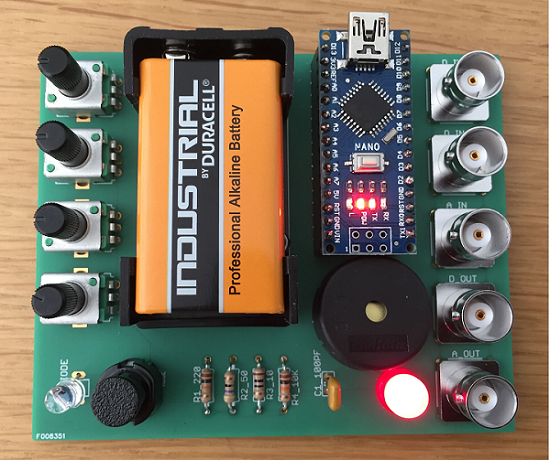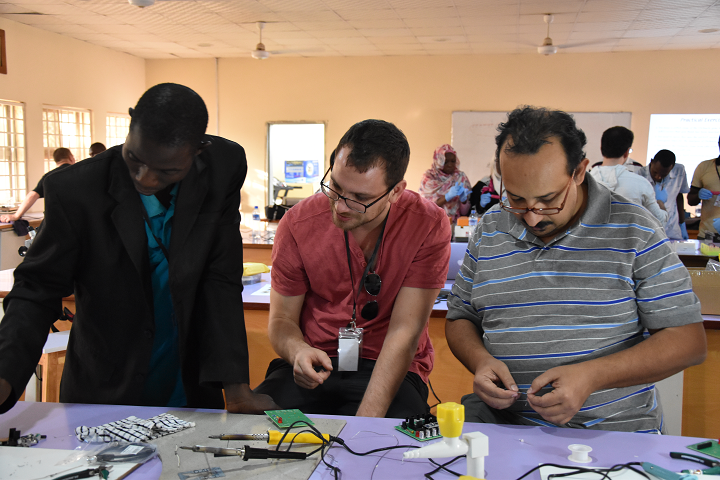
While I was worse in math, science was also not one of my strong suits in school. So anything that makes it easier for students to better understand these complex subjects is a good idea, in my humble opinion. Tom Baden, a professor of neuroscience at the University of Sussex, has been collaborating with his colleagues to further open up access to science education with a piece of hardware that can demonstrate how our brains function.
“By making access to scientific and teaching equipment free and open, researchers and educators can take the future into their own hands,” Professor Baden said. ” In time, we hope that this type of work will contribute to level the playing field across the globe, such that ideas, not funding can be the primary driver for success and new insights.”
 Professor Baden is also one of the scientists behind the innovative 3D printable FlyPi microscope, and his latest work – an educational model of neurons in the brain made with basic electronic components – is just part of his expanding range of equipment that uses DIY and 3D printable models to make science more accessible and interactive.
Professor Baden is also one of the scientists behind the innovative 3D printable FlyPi microscope, and his latest work – an educational model of neurons in the brain made with basic electronic components – is just part of his expanding range of equipment that uses DIY and 3D printable models to make science more accessible and interactive.
One of the central parts of neuroscience is, of course, understanding how our neurons encode and compute information. But there’s not a good hands-on type of way to learn about this…until now. Professor Baden and other colleagues are building Spikeling: a piece of electronic kit which behaves similarly to the neurons in the brain and costs just £25.

“Spikeling is a useful piece of kit for anyone teaching neuroscience because it allows us to demonstrate how neurons work in a more interactive way,” Professor Baden explained.
Professor Baden, together with researchers Ben James, Maxime J.Y. Zimmermann, Philipp Bartel, Dorieke M Grijseels, Thomas Euler, Leon Lagnado and Miguel Maravall, published a paper about their work on Spikeling in the open access journal PLOS Biology, titled “Spikeling: a low-cost hardware implementation of a spiking neuron for neuroscience teaching and outreach.”
 The team hopes that their invention will end up being a useful neuroscience teaching tool, and in fact, they are already seeing the benefits of their hard work. A class of third year neuroscience students at the university have used the kit, and at a Nigerian summer school last year, scientists were also taught how to build the hardware from scratch.
The team hopes that their invention will end up being a useful neuroscience teaching tool, and in fact, they are already seeing the benefits of their hard work. A class of third year neuroscience students at the university have used the kit, and at a Nigerian summer school last year, scientists were also taught how to build the hardware from scratch.
Spikeling has receptors, which react to external stimuli such as light to simulate how information is computed by nerve cells in the brain. Then, students can follow the activity of the receptors, or cells, live on a computer screen. Users can also link several Spikelings together to form a network, which demonstrates how brain neurons interconnect. This action makes it possible to demonstrate the neural behavior behind every day actions, such as walking.
The goal in Professor Baden’s lab is to, as the university put it, “level the playing field in global science” and make necessary equipment less expensive than it usually is. That’s why all of the information and design files for Spikeling have been made available, joining a growing trend around the world of designs collected on the PLOS Open Hardware toolkit, which Professor Baden just so happens to co-moderate.

A. Bag of parts disassembled Spikeling, as used in our summer school in Gombe, Nigeria. B. Students soldering Spikelings as part of an in-class exercise on DIY equipment building.
“With all parts being cheap, and design files being free and open, we hope that like any open Hardware design, Spikeling can be a starting point for others to change or extend it to their requirements, and reshare their improved design with the community,” Professor Baden said.
Andre Maia Chagas, one of the research technicians in the lab, recently published his own article in PLOS Biology that explains the importance of open scientific hardware, in response to a piece by Eve Marder, an American neuroscientist who wondered if researchers who worked in less wealthy institutions would fall behind as scientific research equipment continues to grow more expensive. More and more, we’re seeing that 3D printing can be used to make sure this doesn’t happen.
Discuss this story and other 3D printing topics at 3DPrintBoard.com or share your thoughts below.
[Images provided by University of Sussex]







